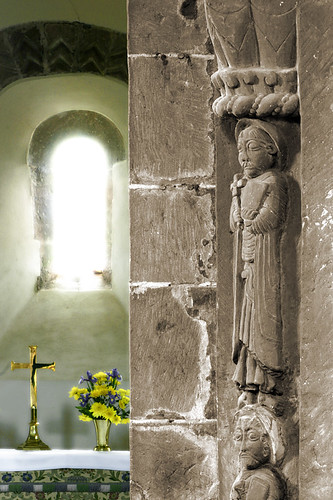 Romanesque is one of my favourite styles of architecture. It has a spirit and a liveliness all of its own. This style of architecture carried primarily in the C11th and C12th holds within its essence the classical forms of Rome and Athens as a distant foggy memory. The Renaissance is a few hundred years away and the lack of classical discipline has allowed a pungent, vibrant, mutated form of architecture to develop which has a vernacular feel. In my opinion it is a mongrel form of architecture and it is all the better for it. Thick set, heavy, rude and imposing.
Romanesque is one of my favourite styles of architecture. It has a spirit and a liveliness all of its own. This style of architecture carried primarily in the C11th and C12th holds within its essence the classical forms of Rome and Athens as a distant foggy memory. The Renaissance is a few hundred years away and the lack of classical discipline has allowed a pungent, vibrant, mutated form of architecture to develop which has a vernacular feel. In my opinion it is a mongrel form of architecture and it is all the better for it. Thick set, heavy, rude and imposing.
The image above is described as a C12th Dragons Head with scrolled tongue. It has also been described as a Dolphin's head (its antecedent being the pagan sculptures of Roman mythology). Whatever it is, it has a dynamic feel with the scroll of the tongue encapsulated within the harsh curve of its mouth. What does it tell us of the people that sculpted it? Were they a passive people?
This image is of the Dragons Head on the former bell tower at St Edmundsbury Cathedral at Bury Saint Edmunds, Suffolk, UK.
If you like Romanesque architecture you can view more here




















